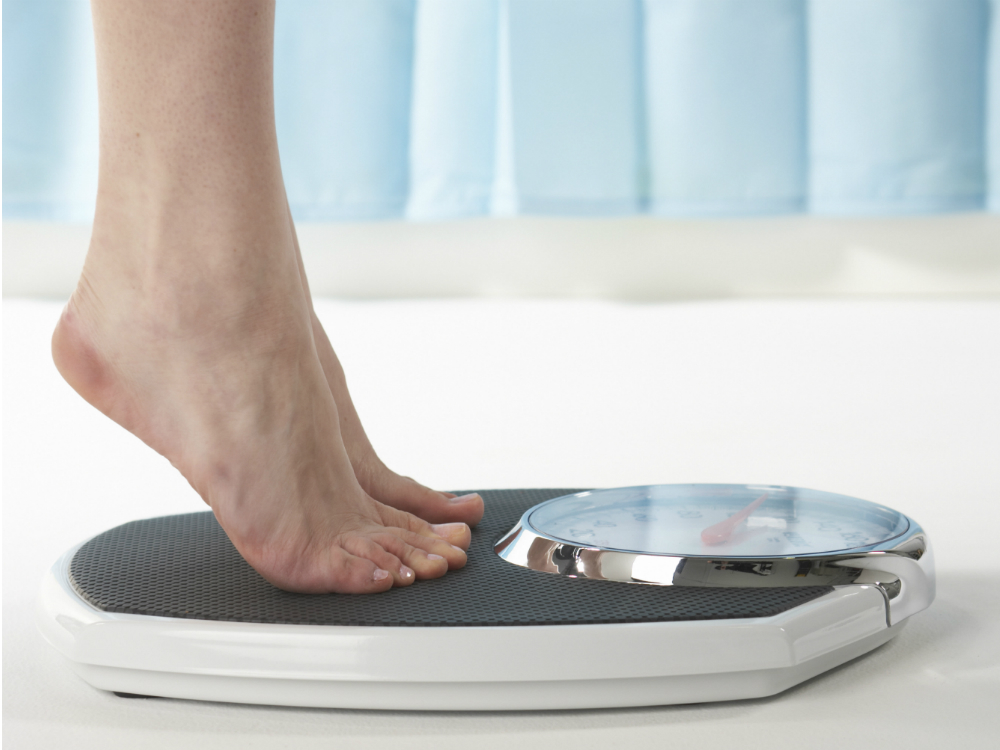Forget About BMI And Make This Your Go-To Fitness Checklist
We've always been told that your BMI (Body Mass Index) is the ultimate measure of health. But new research suggests that it might have less to do with your well-being than you think

We've always been told that your BMI (Body Mass Index) is the ultimate measure of health. But new research suggests that it might have less to do with your well-being than you think
Your BMI is used for everything from assessing life insurance to diagnosing anorexia, but now experts say it's not an accurate method of measuring health. An 'average' BMI is anywhere between 18.5 and 24.9, but it doesn't actually distinguish between muscle and fat. Muscle weighs more, so someone with a high proportion of muscle may very well be classed as overweight or obese.
'Someone can have a BMI of 30 or even 35 and be fit as a flea,' says Dr David Haslam, GP and chair of the National Obesity Forum. 'They may end up being told they are overweight, when their high BMI is down to all the physical activity they do.'
So how can you really know how fit and healthy you are? Forget about BMI and make this your go-to fitness checklist... 1. Where is your fat? An easy way of checking your fat distribution is with a set of smart scales, which have popped up in health centres and gyms over the past few years. They send a small electrical pulse around your body and, as it travels more slowly through fat than muscle, it calculates a picture of your body composition. The more technical models even pinpoint the areas of your body that are storing the most fat and how much visceral (abdominal) fat you have.

2. Get a heart-rate monitor So now you know where your fat is stored - but what about your fitness levels? Your heart rate is a handy way to monitor whether an exercise plan is paying dividends, beyond how your clothes fit.
Personal trainer Si Tate explains why that's a key component in evaluating overall health: 'There's a lot of buzz around heart-rate training as a trend right now, and it offers an easy alternative to BMI as a way to assess fitness. Strap on a heart-rate monitor to get a baseline reading. Next, work out your maximum heart rate by deducting your age from 220 (ie, if you're 35, it would be 220 - 35 = 185bpm). Sprint on a treadmill until the monitor shows you've hit this heart rate, then stop. Time how long it takes your heart rate to drop back to its starting number. The fitter you are, the faster it will fall.'
3. Monitor your blood pressure This should be checked by a doctor every 5 years, or every year if you've had a high reading previously (a high reading is below 80 over 120).
Marie Claire Newsletter
Celebrity news, beauty, fashion advice, and fascinating features, delivered straight to your inbox!
But if you want to keep an eye on it yourself, invest in a reputable blood-pressure monitor, such as the Omron M2 Basic Digital Automatic Blood Pressure Monitor, £25.75, and use it monthly.
4. Have your cholesterol checked
Six in every 10 adults have raised cholesterol levels, so it's extremely important to get yours checked. Make an appointment for a blood test at your GP surgery every five years, or more regularly if you have a close relative with inherited high cholesterol. (Don't bother with the home testing kits as they're not reliable.)

So if our size isn't the definitive answer when it comes to how fit and healthy we are, should BMI charts be banished altogether? 'Well, we do need a way of quantifying the "size" of the population, but that's hard to do,' says Professor Nick Finer, obesity expert from University College London Hospitals. 'Skin-fold tests don't work very well and body-composition scales only give an estimate. So in the meantime, BMI is here to stay.'
The key, though, is placing equal, if not more, importance on the true markers of health and fitness - what we eat, drink, how much we move and whether we smoke or take drugs. And if we take an honest look at our lifestyles, we already have that knowledge to hand. So we have a final answer - as long as health is the goal, your BMI needn't come into the picture.
The leading destination for fashion, beauty, shopping and finger-on-the-pulse views on the latest issues. Marie Claire's travel content helps you delight in discovering new destinations around the globe, offering a unique – and sometimes unchartered – travel experience. From new hotel openings to the destinations tipped to take over our travel calendars, this iconic name has it covered.
-
 New Look’s spring collection has dropped - As a picky fashion editor, I’m seriously impressed
New Look’s spring collection has dropped - As a picky fashion editor, I’m seriously impressedSpring trends at affordable prices
By Jazzria Harris
-
 I'm the founder of an ethical brand marketplace - why, in the wake of tariff-gate, protecting independent businesses is more important than ever
I'm the founder of an ethical brand marketplace - why, in the wake of tariff-gate, protecting independent businesses is more important than everThis Earth Day, the founder of Wolf & Badger shares why protecting sustainable brands is so pivotal.
By Ally Head
-
 Three ways to enhance your skincare routine with technology
Three ways to enhance your skincare routine with technologyBy Jenny Proudfoot